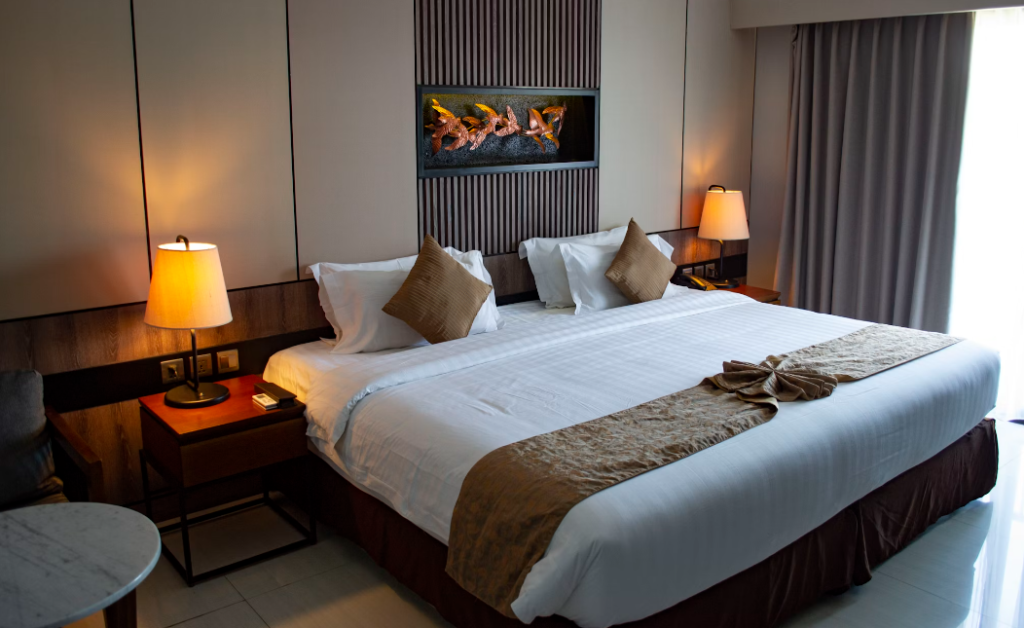The UK hotels market is expected to hit record highs despite the challenges of recent years, and boutique hotels are carving out their own niche through unique experiences that stand apart from uniform hotel chains. If you’re planning to set one up, interior design is key in distinguishing yourself from your competitors!

Below, uncover a range of design tips to help you attract visitors and leave a lasting impact.
Embracing a theme
Choosing and embracing a coherent theme is pivotal for a boutique hotel. This refers to the aesthetic of your hotel as well as its ethos – from the stylings to the service, everything should tell the same story!
Whether drawing inspiration from local history, a specific art movement or a concept like sustainability, your theme should resonate through every detail to deliver a joined-up experience.
Focusing on comfort and functionality
While aesthetics are crucial for a boutique hotel, you can’t compromise on comfort and functionality.
Your guestrooms should be sanctuaries of rest and rejuvenation, blending your unique twist with usability. Prioritise comfortable beds and bedding for a good night’s sleep, plus ample lighting to help your guests get themselves ready.
Storage for their belongings is important too, such as a cleverly designed wardrobe interior with distinct sections for different items. And don’t skimp on your bathrooms – especially the showers!
Incorporating local art and craftsmanship
Integrating local art and creators not only supports your community, but also gives your hotel an authentic flavour that can’t be replicated elsewhere.
Custom furnishings, artwork and decor that reflect the local culture can add depth to your hotel’s narrative, making each stay more memorable. Successful boutique hotel chains take this approach further by creating unique identities in each new location, making sure they still feel distinct.
Creating signature spaces
Every boutique hotel should have a few signature spaces that leave a lasting impression. From an iconic lobby paying homage to an era gone by, to a serene garden for guests to unwind in, these areas should be the heart and soul of your hotel.
Their design must strongly reflect your hotel’s overall theme, while encouraging your guests to engage with them and explore!
Sustainable design practices
Sustainability is more than a trend now; it’s a responsibility. The modern traveller is increasingly conscious of their environmental impact, making sustainable design practices not just admirable but expected. In fact, 80% of global travellers now believe sustainable travel is important.
This encompasses everything from energy-efficient lighting and water-saving fixtures to the use of recycled materials and renewable energy sources. Sustainable practices not only reduce your hotel’s carbon footprint, but also appeal to a growing segment of eco-conscious guests.
In summary, designing a boutique hotel is about creating a cohesive experience that resonates with guests on several levels. By homing in on the principles above, you can craft a space that stands out and

